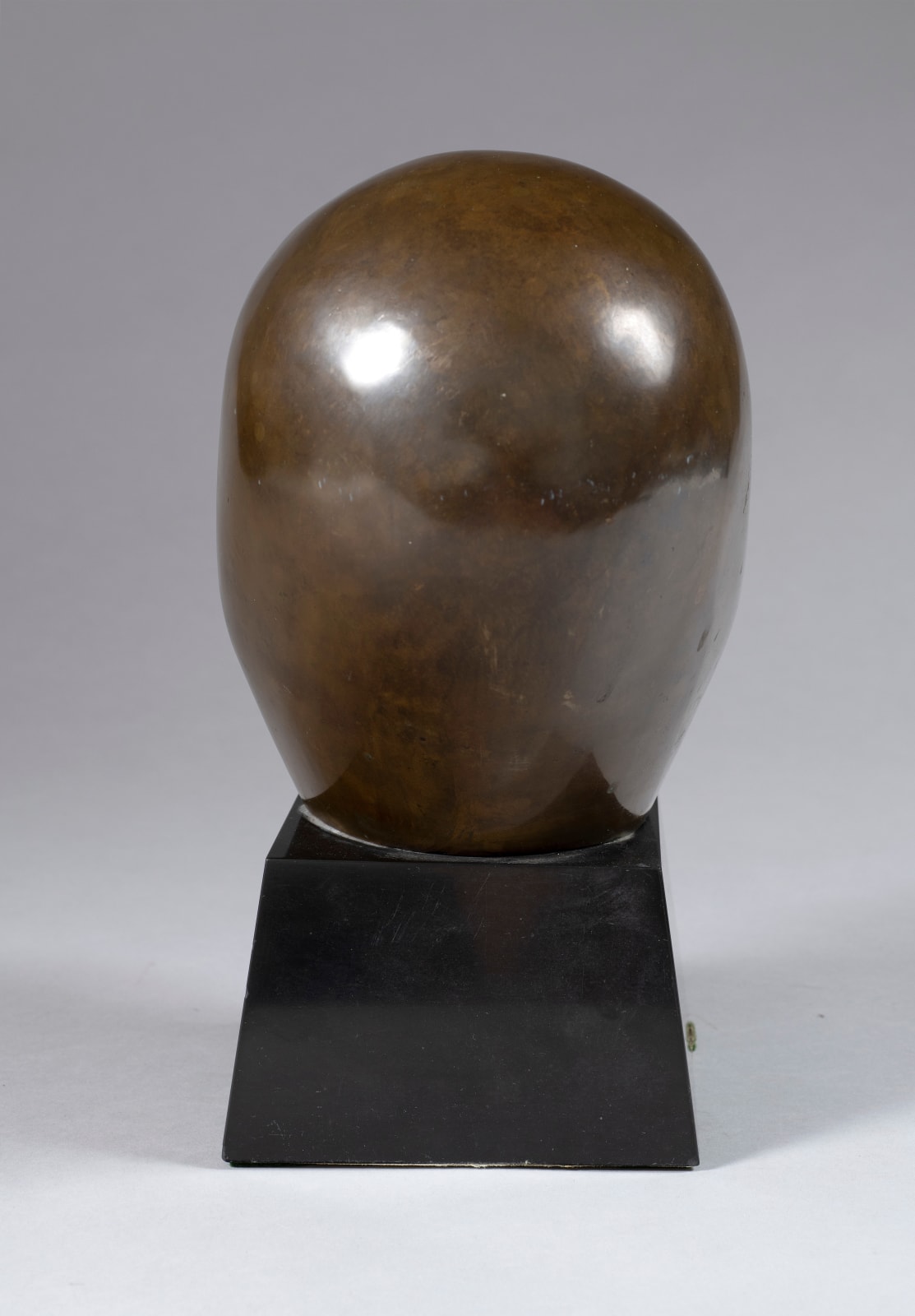Jacob Epstein 1880-1959
Further images
Epstein's portrait head of two-year-old Romilly John, the son of his friend and fellow artist Augustus John, was commissioned by the latter sometime in 1907. Epstein had recently moved his studio from the Fulham Road to 72 Cheyne Walk, Chelsea; Augustus John had a studio nearby in the Kings Road and the two men had become friends after meeting through New English Art Club connections. John later wrote to his wife Dorelia that he had sent Epstein 'a fiver on account of Rom's portrait' in 1908, when Epstein was under attack for his controversial figures on the British Medical Association building in the Strand.
Epstein had earlier modelled babies' heads around 1902-04 in simple, naturalistic form, however his head of Rom radically departs from the earlier works by combining the naturalistic treatment of the boy's chubby cheeks with the more stylised rendering of his smooth cap of hair, burnished to resemble a helmet and taking on an abstract appearance when viewed from behind. The work heralds Epstein's move towards modernist forms but probably also draws on his admiration for Assyrian sculpture. Epstein began by modelling the head in clay from life, then cast it in plaster, and finally, in bronze in an edition of nine. The work was clearly of great significance to Epstein. He later carved a life-size copy in limestone (c. 1909-10) that he kept throughout his life; also carving a second version in 1910, and commissioning fellow sculptor Eric Gill to copy the original bronze in the same year.
Provenance
On long-term loan from a private collectionBe the first to know – Sign Up
Subscribe to our newsletter and be the first to know about everything new at Ben Uri, including the constantly evolving and expansive online content across our exhibitions, collection and research.
We value and respect your privacy. Your personal data will be kept private and processed securely, according to our Privacy Policy. If you change your mind anytime, you can unsubscribe directly when receiving a mail from us (the link will be at the bottom of the email) or contact us.
* denotes required fields
This website uses cookies to improve your experience. If you are not happy with this, you can opt-out below.















